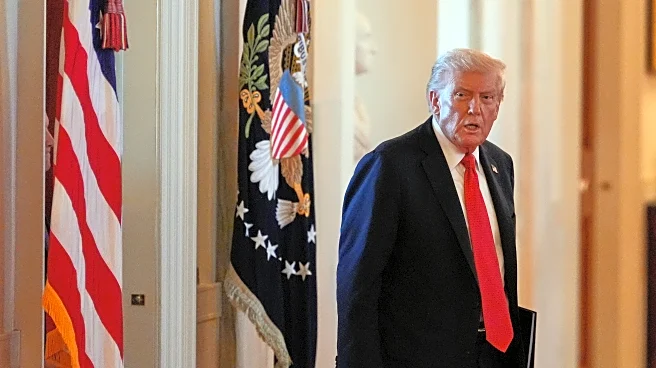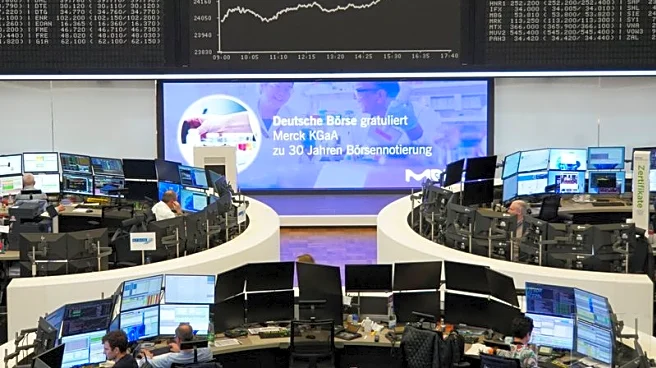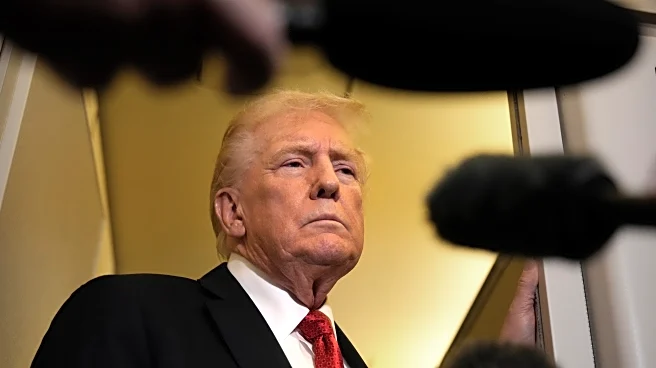What's Happening?
U.S. Treasury yields increased on Thursday as investors focused on trade developments and awaited key inflation data. The benchmark 10-year Treasury yield rose by 4 basis points to 3.993%, while the 2-year
Treasury note yield and the 30-year bond also saw increases. This movement in yields comes as President Trump announced a scheduled meeting with Chinese President Xi Jinping, highlighting ongoing trade relations between the U.S. and China. Additionally, Treasury Secretary Scott Bessent indicated that the White House is considering export restrictions to China involving U.S. software, in response to Beijing's rare-earth export controls. Investors are also anticipating the release of the consumer price index, which has been postponed to Friday, to gain insights into the U.S. economy's health ahead of the Federal Reserve's upcoming meeting.
Why It's Important?
The rise in Treasury yields reflects investor concerns over U.S.-China trade relations and potential economic impacts. The consideration of export restrictions by the U.S. could escalate trade tensions, affecting global markets and industries reliant on rare-earth materials. The anticipated consumer price index release is crucial for assessing inflation trends, which could influence Federal Reserve policy decisions. A rate cut by the Fed is widely expected, as officials are concerned about recent weaknesses in job reports, potentially signaling economic deterioration. These developments could have significant implications for U.S. economic stability and international trade dynamics.
What's Next?
The Federal Reserve's meeting later this month will be closely watched, with expectations of a rate cut to support the economy. The outcome of President Trump's meeting with Chinese President Xi Jinping could further impact trade relations and market sentiment. Additionally, the release of the consumer price index will provide critical data for policymakers and investors, potentially affecting future economic strategies. Stakeholders, including businesses and financial markets, will need to navigate these developments carefully to mitigate risks and capitalize on opportunities.
Beyond the Headlines
The potential export restrictions to China could have long-term implications for U.S. technology and software industries, affecting global supply chains and innovation. The geopolitical dynamics between the U.S. and China may also influence international alliances and economic policies, as countries respond to trade tensions and seek strategic partnerships. The broader economic context, including inflation and employment trends, will continue to shape public policy and business strategies in the U.S.













